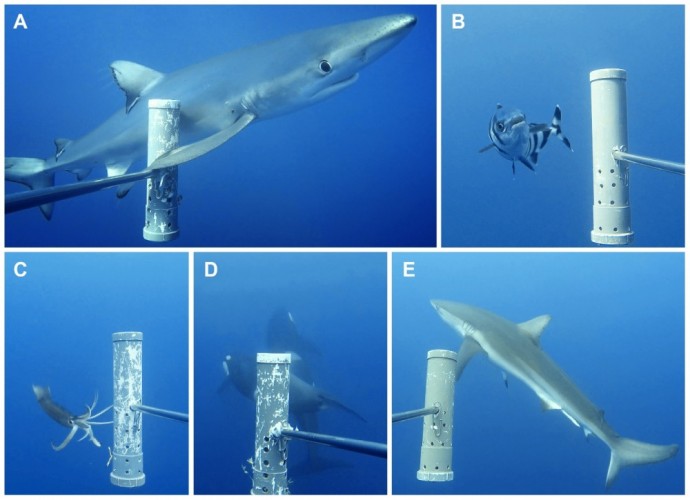Where
Multiple sites located both inside and to the west of the Bremer Marine Park.
Who
Professor Jessica Meeuwig (University of Western Australia), Dr. Phil Bouchet (University of Western Australia), Mr Andrew Forrest (University of Western Australia), Mr John Totterdell (Marine Information and Research Group Australia). Funding by NESP Marine Biodiversity Hub (Emerging Priorities Program), Parks Australia, Integrated Marine Observing System (IMOS), Ian Potter Foundation.
When
February to March 2017
Why
Many populations of large oceanic fishes and sharks have experienced strong declines in the last decades as a result of human activities, including widespread overfishing. Reversing these declines requires a robust understanding of where animals are in the ocean, and in what numbers. Marine parks have an important role to play in promoting biodiversity conservation and assisting population recovery, but a large proportion are located in remote offshore waters where scientific surveys remain challenging to implement. Marine park benefits, therefore, can only be effectively measured with survey tools designed to sample marine organisms in deep environments. This project enabled the first ever deployments of drifting video systems within the Bremer Marine Park, allowing data on the diversity, abundance, distribution and behaviour of pelagic wildlife to be collected non-invasively. The survey of the Bremer Marine Park forms part of a larger collaborative effort to establish scientific baselines for monitoring poorly understood species of sharks and fishes in marine parks off the coast of Western Australia.
How
One hundred underwater video transects were undertaken using drifting baited cameras (mid-water stereo-BRUVS) during a 10-day period in February and March 2017. The video rigs consist of two GoPro action cameras affixed to a galvanised steel frame, which travels with currents under a group of floats/buoys for 2 hours. The technology was developed in 2012 at the University of Western Australia in response to the need for an innovative, affordable and non-intrusive approach to pelagic sampling, and has been used widely since then to acquire information on mobile marine vertebrates (for instance, as part of the National Geographic Society’s Pristine Seas Programme). While pelagic stereo-BRUVS have been deployed in a number of parks off Western Australia (e.g. Oceanic Shoals, Perth Canyon etc.), this was the first survey of its kind in the Bremer canyon region. All footage processing and analysis were carried out at the Marine Futures Lab, University of Western Australia.
What did we learn?
A total of 14 potential species (9 confirmed) were detected, including killer whales, bronze whaler and blue sharks, southern bluefin tuna, and cock-eyed squid, confirming the likely importance of the Bremer canyon region to a range of marine predators. Hundreds of large schools of jacks/mackerels and herrings/sardines were also recorded. All sharks seemed fairly widespread and were seen on multiple transects inside and outside the park. By contrast, killer whales were only observed at the head of the Knob canyon, west of the park boundary. Preliminary analyses revealed no apparent differences in the diversity or abundance or diversity of fish and shark communities between sampling sites located inside and outside the park. Diversity and abundance were comparable to that of the Ningaloo and Perth canyons and significantly greater than that observed at the Geographe Marine Park.
What next?
Repeat surveys at different times of the year are critically needed to enhance our understanding of the variation in species occurrence and abundance across seasons and years. Importantly, such data will increase certainty in the patterns of space use inside vs. outside the Bremer Marine Park, and through time as protection is established.
Related data and publications
Meeuwig J, Turner J. (2017) Bremer Canyon Progress Report - NESP Emerging Priorities Project EP2 (Spatial distribution of marine wildlife in the Bremer Bay region). Report prepared for the NESP Marine Biodiversity Hub, 18 p.
Meeuwig J, Turner J, Bouchet P. (2016) Bremer Canyon Science Workshop Report - NESP Emerging Priorities Project EP2. Report prepared for the NESP Marine Biodiversity Hub, 27 p. DOI: 10.13140/RG.2.2.25891.35364.
Dataset (2017): Pelagic baited camera (stereo-BRUVS) survey of the Bremer Marine Park and adjacent areas (NESP Emerging Priorities EP2)
Surveying marine life in the canyons off Bremer Bay project webpage
For more information please contact marinescience@environment.gov.au.


